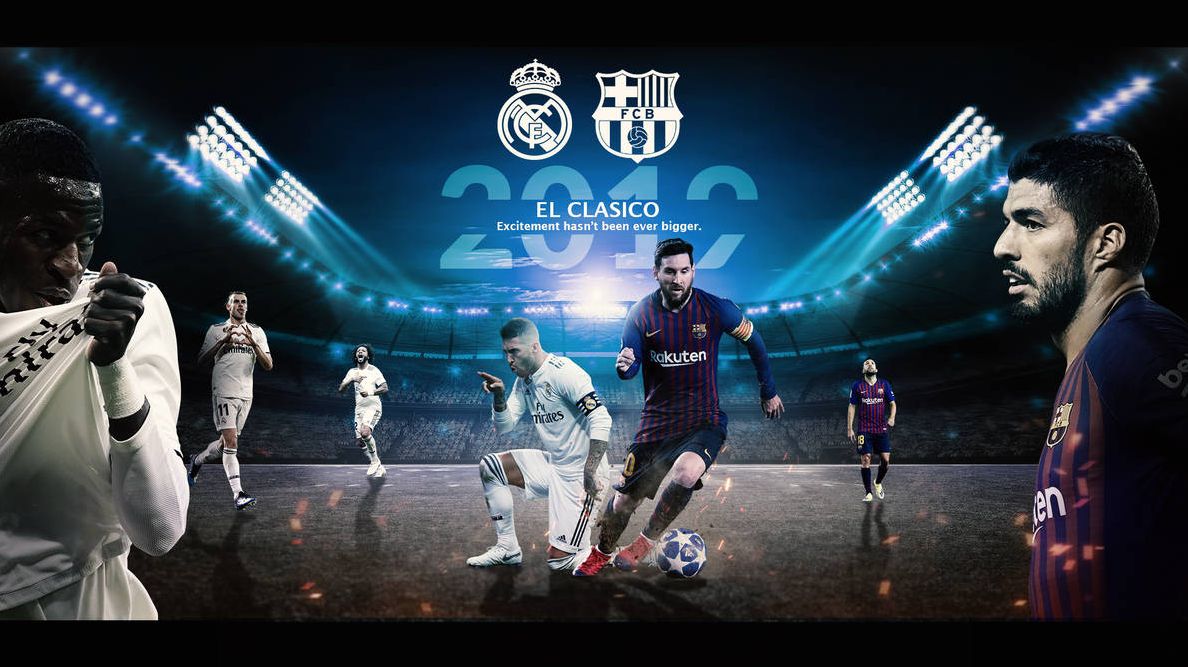Tracing the history of the iconic 'El Clasico' rivalry
It is a rivalry like no other, a match which permeates beyond the white lines of the football pitch. It's a complex cocktail of sport and politics. It's the biggest game on earth.
But, as everybody knows, El Clasico is about more than goals, Galacticos and 88 years of epic footballing rivalry.
FC Barcelona became a symbol of Catalan identity during the dictatorship of General Francisco Franco which ruled between 1939 and 1975, giving rise to the club's motto "Mes que un club" (More than a club).
Real, meanwhile, were the club of the capital and widely regarded as representing the Spanish establishment.
There are few rivalries in sport that capture the imagination like the coming together of Real Madrid and Barcelona -- a soccer match of such enormity that it has its own nickname: "El Clasico."
On the field, it is a billion-dollar grudge match between the two best teams in the football-mad country of Spain.
Off the field, it is a tale of two cities -- a clash of Castilian nationalism and Catalan pride; and a rivalry of cultures forged in the Spanish civil war and the reign of General Franco.
The modern-day El Clasico brings together the world's two highest-earning sports clubs -- apparenty boasting combined revenues of over $1 billion.
Real Madrid are famed for their extravagance -- with the $130 million paid to Manchester United for Cristiano Ronaldo in 2009 typical of their cavalier policy in the transfer market.
They profess the '"Galacticos" mentality -- a team of superstars -- demonstrated by a 2010-11 squad that cost an eye-watering $689 million to assemble.
Barca are not without their big-name signings, but rely far more heavily on homegrown talent -- with the likes of Lionel Messi and Spanish World Cup winners Xavi and Andres Iniesta being products of the club's youth academy, La Masia.
The two teams played for the first time in 1902, but the rivalry soon transcended the confines of a soccer match.
Barca came to represent the fight for Catalan independence from Spain, and a rejection of the nationalist regime that ruled the country from Madrid -- especially under the rule of Franco, who came to power at the culmination of the bloody Spanish Civil War in 1939.
Madrid were the all-powerful institution. They had political and royal backing -- the "Real" in their name, meaning "Royal," was a gift from King Alfonso XIII in 1920 -- and from the 1950s, boasted a collection of the world's best and most glamorous players.
The relationship was exacerbated by the transfer of Alfredo Di Stefano to Madrid in 1953. The Argentine was wanted by both clubs, and both thought they'd signed him.
But it was Madrid who got the legendary striker, and Di Stefano duly inspired a decade of dominance at the Bernabeu.
Barca have always suspected foul play. Their official website claims a "royal decree" persuaded Di Stefano to join Madrid, and there has long been the suggestion that the establishment pushed the deal through.
The El Clasico was recently defined by two world-class players, and two world-beating coaches. It used to be Madrid's Cristiano Ronaldo against Barca's Messi on the field, and Jose Mourinho against Pep Guardiola on the sidelines.

Until relatively recently the Real-Barca rivalry was a one-sided affair. Madrid built dynasties in the 1950s and 1960s, and continued to dominate domestically and in Europe throughout the 1970s and 1980s.
Barca enjoyed sporadic success, but it wasn't until the early 1990s that they finally launched a dynasty of their own -- winning four titles in a row under Dutch coach Johan Cruyff before lifting their first European Cup in 1992.
The balance of power shifted back and forth over the next 15 years, but Barca are now in the ascendancy.
But El Clasico still manages to captivate the attention of literally every single eyeball around the globe.


.png)


Leave a Reply